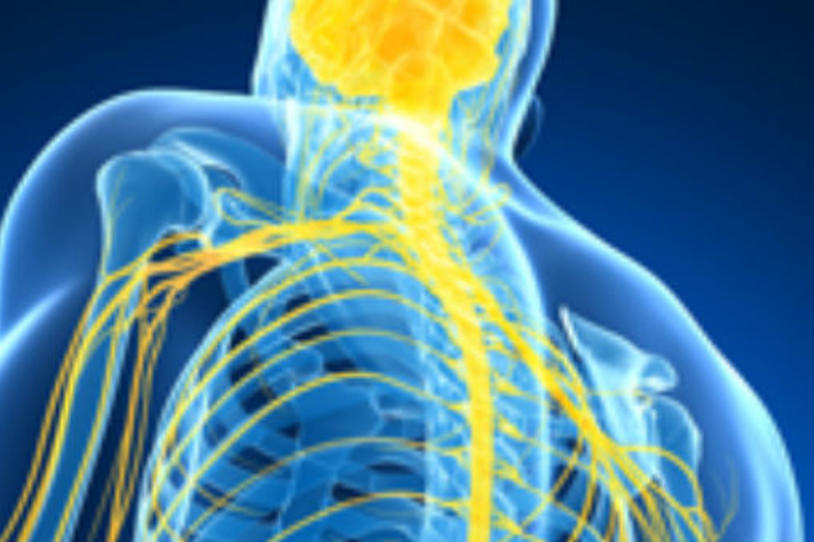
Image of spinal cord and nervous system courtesy of NIH
Deep brain stimulation is a game changer for many Parkinson’s disease (PD) patients. This therapy can alleviate motor symptoms and improve quality of life, but it does require brain surgery and is not a possibility for all people with PD.
A group of researchers from Duke University and the Edmond and Lily Safra Institute of Neuroscience of Natal in Brazil is working toward the same end result without the need for such an invasive procedure. These investigators made a splash earlier this year when they published in Scientific Reports that spinal cord stimulation in pre-clinical models improved motor symptoms and showed neuronal protection.
The Michael J. Fox Foundation (MJFF) did not fund that study, but we have funded research from this same group of investigators to test spinal stimulation in a more advanced model. The MJFF-supported study is not testing the neuroprotective effect.
“This is an exciting time for, what we call, neuromodulation,” says Maurizio Facheris, MD, MSc, associate director of research programs at MJFF. “While deep brain stimulation has helped many people living with Parkinson’s disease, there are limitations to its use. Spinal stimulation could extend this therapeutic approach to many more.”
For deep brain stimulation (DBS), a surgeon implants a thin electrode into the brain, targeting motor circuits that are not functioning properly. Small electrical pulses from a device similar to a cardiac pacemaker block the signals that cause some Parkinson's motor symptoms. Spinal stimulation uses the same technique, but rather than blocking the signals where they begin, the therapy blocks them further downstream. The electrodes are implanted in the dura, the outermost of three layers that surround the spinal cord.
Spinal cord stimulation is already used to treat chronic pain. Researchers are fine-tuning the application to work on the neurons that misfire to create Parkinson’s motor symptoms. If successful, this procedure would be an alternative for patients who may not be able to have DBS because of vascular problems, mood disorders or aversion to brain surgery.
Through another grant, MJFF is supporting researchers from the University of California, San Francisco to develop a method to record brain activity during DBS so the stimulation can take place only when needed instead of continuously. The same enhancements could be used in spinal stimulation. Read more about that research.
